 |
Clear Springs Press |
 |
Clear Springs Press |
The purpose of a tuner is to match the 50 ohm output impedance of the transmitter to the input impedance of the transmission line - antenna system. If there is mismatch, there is reflected power dissipated in the transmitter final amplifier causing it to get hot. If the mismatch is large, the amount of reflected power dissipated as heat will be large, and the extra heat can cause the finals to blow. The antenna tuner does not reduce the feed line losses in the transmission line when a high SWR is present. The antenna tuner does not improve the performance of the antenna. The antenna tuner will improve overall system performance because matching impedances will allow more power to be delivered to the transmission line system.
There are a large number of portable antenna tuners to choose from. Most of the more compact and light weight ones use ferrite core inductors because they are small. They also introduce more loss into the system than air core inductors which are larger. Antenna Tuners that are optimized for balanced feedlines and the high impedances and high SWR found with random wire antennas use air core inductors and air gap capacitors.
The two broad categories of tuners are manual and automatic. With a manual tuner, you turn the knobs that select inductance and capacitance while you visually watch the SWR measurement on an analog meter. With an automatic tuner, you push a couple of buttons and the tuner automatically selects the inductors and capacitors in its network to give a good impedance match. Automatic tuners use relays to switch the inductors and capacitors. Low power consumption designs use latching relays that do not require current to keep them in position once a match is established. Automatic tuners are fast and convenient and are generally smaller and lighter but do require internal batteries to operate. Without going into a detailed description of the internal design and function of tuners, here are a few examples to provide a perspective on size, weight and capability.
One example is the MFJ-974HB balanced line manual tuner. It is shown in the photo below with an SGC-2020 for size comparison. The pack weight of one of these is around 4.5 pounds (2.04 kg). It is designed to be used with window line and the combination provides very low losses when used with random wire antennas, horizontal loops, rhombics and other antennas with a very high impedance or wide range of impedances. It can match impedances from near 12 to 2000 ohms.
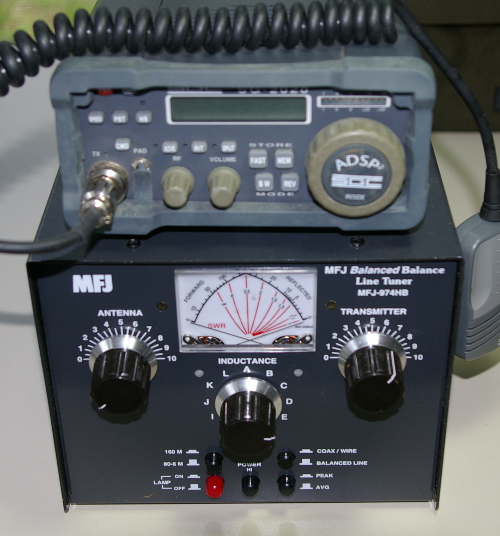
This is a look at the inside showing the air core coils and capacitors.
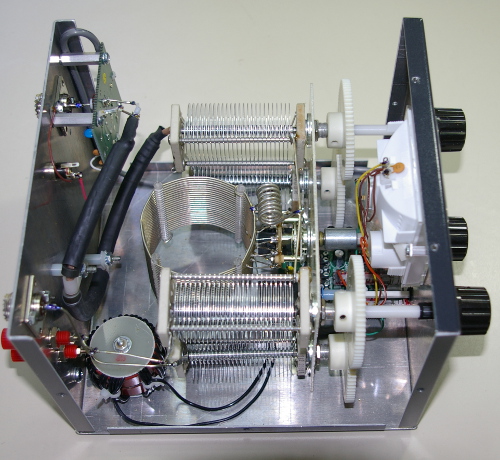
For comparison, this photo is of a Z11ProII automatic antenna tuner. With the addition of an external balun, this tuner can do the same job as the MFJ-974HB while being significantly smaller and with less than half the weight at 1.5 pounds (0.68 kg). It can match impedances of 6-1000 ohms without an external balun, but the internal losses will be slightly higher because it uses ferrite core inductors rather than the large air core inductors.
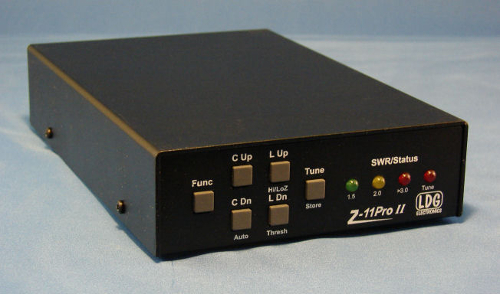
For another comparison, this photo is of a MFJ-971 manual antenna tuner. It is a good size match for the SG2020 and weighs 2.9 pounds (1.32 kg). It can match impedances from near zero to 600 ohms.
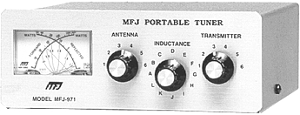
For another comparison, this photo is of an Elecraft T1 automatic antenna tuner. It is one of the smallest and weighs 5 ounces (0.142 kg). It will handle a maximum of 20 watts and SWR values of at least 10:1.
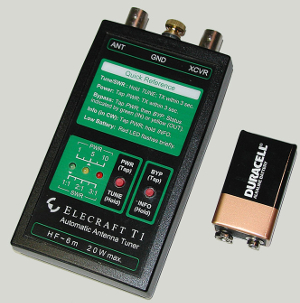
Backpackers will go with smaller and lighter. I am no exception. However, I still like real knobs and switches and analog readouts.
Here are links to the manufacturers of the antenna tuners mentioned above:
These manufacturers are mentioned as examples only. There are many more.
Resonant dipoles, resonant end fed antennas, terminated folded dipoles and other traveling wave antennas don't need a tuner.
Back to the
Table of Contents
Purchase this book or read it FREE on Amazon Prime